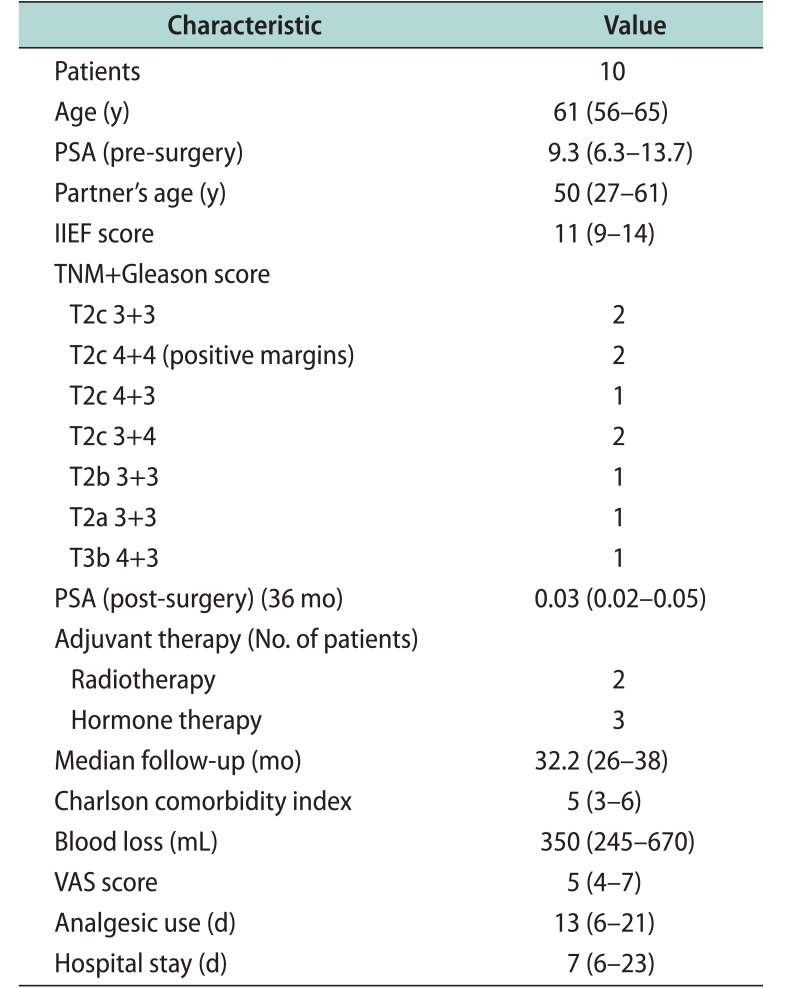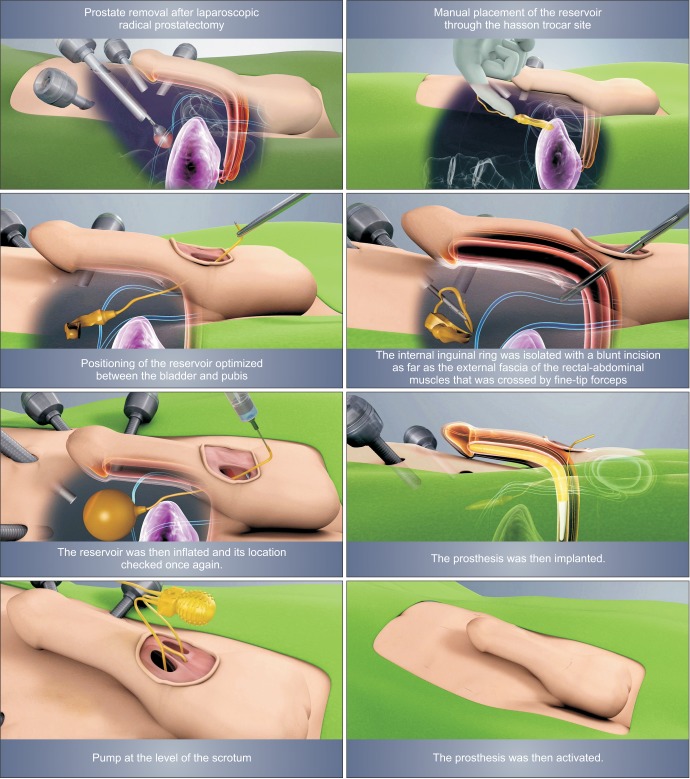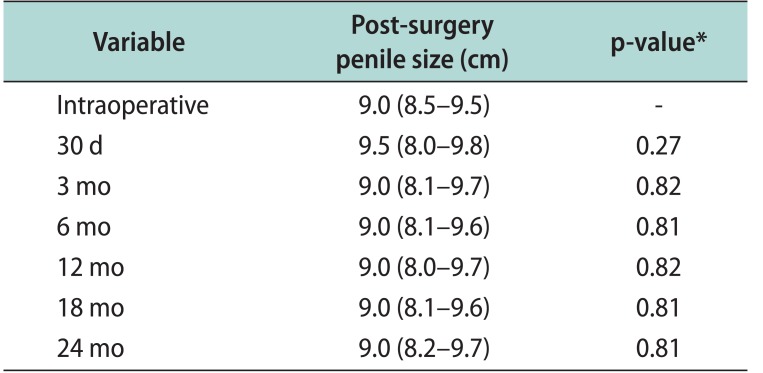1. Heidenreich A, Bastian PJ, Bellmunt J, Bolla M, Joniau S, van der Kwast T, et al. EAU guidelines on prostate cancer. part 1: screening, diagnosis, and local treatment with curative intentupdate 2013. Eur Urol. 2014; 65:124–137. PMID:
24207135.

2. Weyne E, Castiglione F, Van der Aa F, Bivalacqua TJ, Albersen M. Landmarks in erectile function recovery after radical prostatectomy. Nat Rev Urol. 2015; 12:289–297. PMID:
25868558.

3. Wang X, Wang X, Liu T, He Q, Wang Y, Zhang X. Systematic review and meta-analysis of the use of phosphodiesterase type 5 inhibitors for treatment of erectile dysfunction following bilateral nerve-sparing radical prostatectomy. PLoS One. 2014; 9:e91327. PMID:
24618671.

4. Gandaglia G, Suardi N, Cucchiara V, Bianchi M, Shariat SF, Roupret M, et al. Penile rehabilitation after radical prostatectomy: does it work? Transl Androl Urol. 2015; 4:110–123. PMID:
26816818.
5. Polito M, d'Anzeo G, Conti A, Muzzonigro G. Erectile rehabilitation with intracavernous alprostadil after radical prostatectomy: refusal and dropout rates. BJU Int. 2012; 110:E954–E957. PMID:
23078100.

6. Gontero P, Galzerano M, Bartoletti R, Magnani C, Tizzani A, Frea B, et al. New insights into the pathogenesis of penile shortening after radical prostatectomy and the role of postoperative sexual function. J Urol. 2007; 178:602–607. PMID:
17570431.

7. Trost LW, Baum N, Hellstrom WJ. Managing the difficult penile prosthesis patient. J Sex Med. 2013; 10:893–906. quiz 907. PMID:
23551538.

8. Khoudary KP, DeWolf WC, Bruning CO 3rd, Morgentaler A. Immediate sexual rehabilitation by simultaneous placement of penile prosthesis in patients undergoing radical prostatectomy: initial results in 50 patients. Urology. 1997; 50:395–399. PMID:
9301704.

9. von Elm E, Altman DG, Egger M, Pocock SJ, Gøtzsche PC, Vandenbroucke JP. STROBE Initiative. The Strengthening the Reporting of Observational Studies in Epidemiology (STROBE) Statement: guidelines for reporting observational studies. Int J Surg. 2014; 12:1495–1499. PMID:
25046131.

10. Gompertz P, Harwood R, Ebrahim S, Dickinson E. Validating the SF-36. BMJ. 1992; 305:645–646.

11. Yang LY, Manhas DS, Howard AF, Olson RA. Patient-reported outcome use in oncology: a systematic review of the impact on patient-clinician communication. Support Care Cancer. 2018; 26:41–60. PMID:
28849277.

12. Mondaini N, Sarti E, Giubilei G, Gavazzi A, Costanzi A, Belba A, et al. Penile prosthesis surgery in out-patient setting: Effectiveness and costs in the “spending review” era. Arch Ital Urol Androl. 2014; 86:161–163. PMID:
25308576.

13. Clough KB, Kroll SS, Audretsch W. An approach to the repair of partial mastectomy defects. Plast Reconstr Surg. 1999; 104:409–420. PMID:
10654684.

14. Conti D, Ballo P, Buoncristiano U, Secchi S, Cecconi P, Buoncristiano M, et al. Clinical utility of an undersized nurse-operated recovery room in the postoperative course: results from an Italian community setting. J Perianesth Nurs. 2014; 29:185–190. PMID:
24856335.

15. Zucca-Matthes G, Manconi A, da Costa Viera RA, Michelli RA, Matthes Ado C. The evolution of mastectomies in the oncoplastic breast surgery era. Gland Surg. 2013; 2:102–106. PMID:
25083466.
16. Kang HW, Lee JY, Kwon JK, Jeh SU, Jung HD, Choi YD. Current status of radical prostatectomy for high-risk prostate cancer. Korean J Urol. 2014; 55:629–635. PMID:
25324944.

17. Preston MA, Breau RH, Lantz AG, Morash C, Gerridzen RG, Doucette S, et al. The association between nerve sparing and a positive surgical margin during radical prostatectomy. Urol Oncol. 2015; 33:18.e1–18.e6.

18. Ramsawh HJ, Morgentaler A, Covino N, Barlow DH, DeWolf WC. Quality of life following simultaneous placement of penile prosthesis with radical prostatectomy. J Urol. 2005; 174:1395–1398. PMID:
16145445.






 PDF
PDF ePub
ePub Citation
Citation Print
Print






 XML Download
XML Download